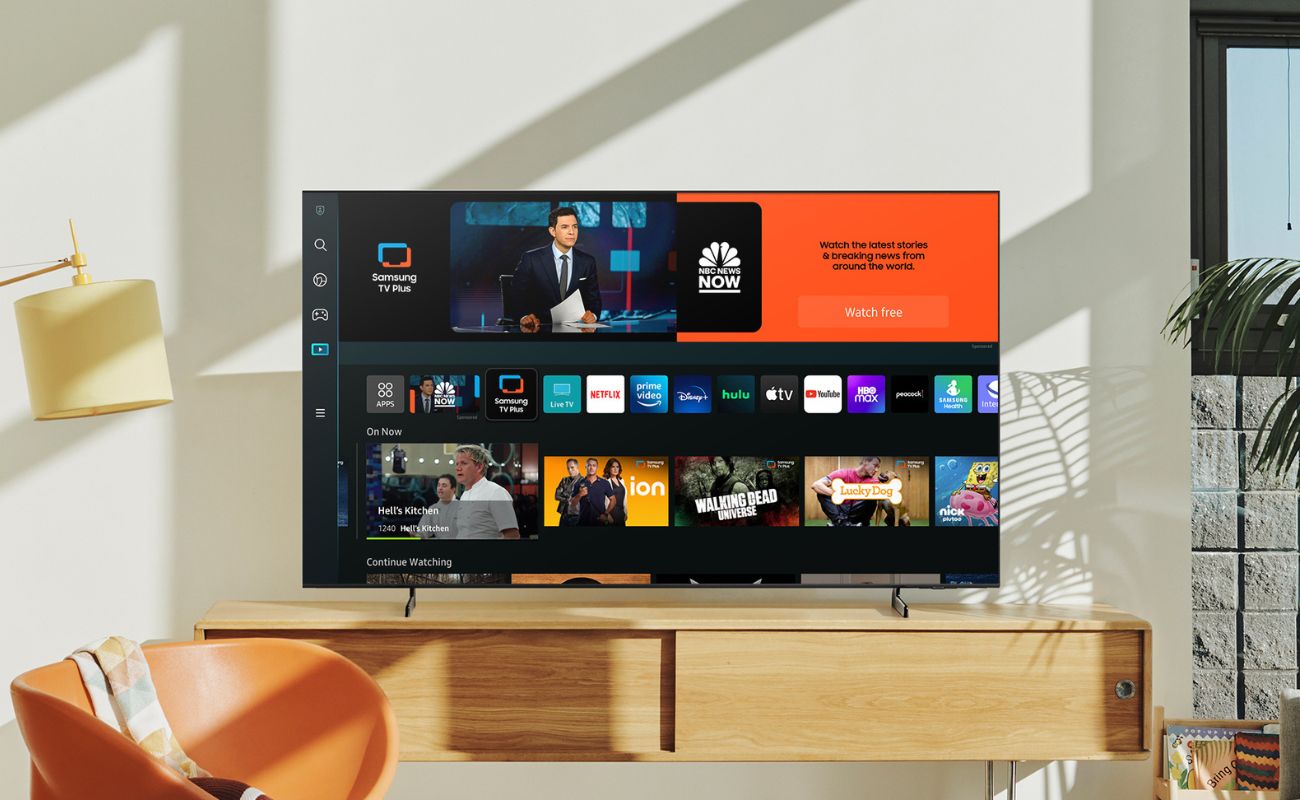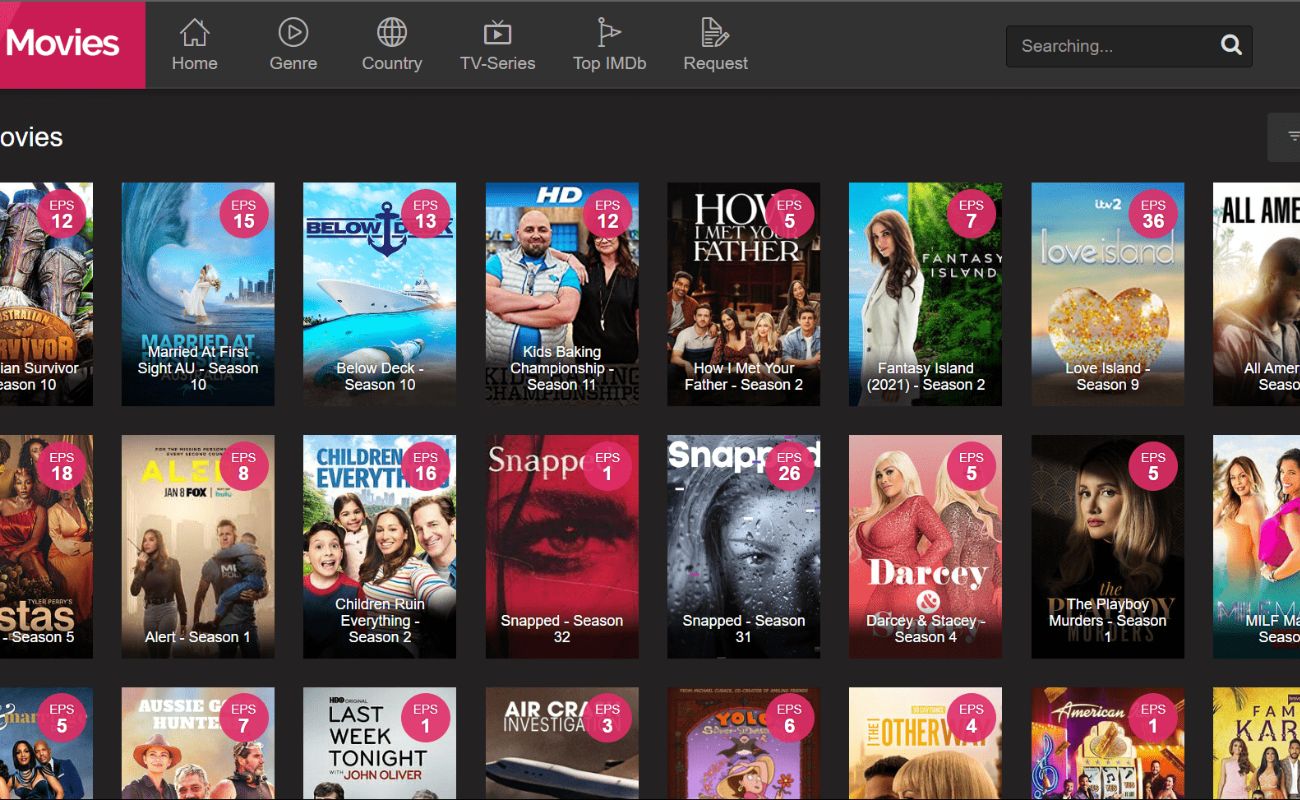Home>Technology>Home Entertainment Systems>Which Age Group Watches Television The Most


Home Entertainment Systems
Which Age Group Watches Television The Most
Modified: January 5, 2024
Discover which age group watches television the most and how it impacts home entertainment systems. Explore the latest trends in home entertainment consumption.
(Many of the links in this article redirect to a specific reviewed product. Your purchase of these products through affiliate links helps to generate commission for Storables.com, at no extra cost. Learn more)
Introduction
Television has been a staple in households for decades, serving as a primary source of entertainment, news, and information. With the evolution of technology, the way people consume television has undergone significant changes. From traditional cable and satellite services to streaming platforms and smart TVs, the options for accessing television content have expanded exponentially. This shift in viewing habits has sparked curiosity about which age groups are the most avid television watchers.
Understanding the demographic patterns of television consumption can provide valuable insights for content creators, advertisers, and media companies. By identifying the age groups that are most engaged with television, stakeholders can tailor programming, advertising strategies, and content delivery methods to better resonate with their target audiences. This article delves into the research findings that shed light on which age groups watch television the most, offering a comprehensive analysis of the data and its implications.
Key Takeaways:
- Older age groups prefer traditional TV, while younger ones lean towards streaming. Content creators and advertisers should tailor strategies to resonate with each group’s viewing habits and preferences.
- Technology and generational influences shape TV viewing habits. Stakeholders must adapt to diverse preferences, embracing targeted strategies to engage audiences across different age groups.
Read more: What Is The Most Watched Television Event
Methodology
Investigating television viewing habits across different age groups requires a robust methodology that captures a diverse range of participants and their viewing behaviors. To achieve this, researchers typically employ a combination of quantitative and qualitative approaches, leveraging surveys, interviews, and data analytics. One common method involves the use of surveys distributed across various demographics to gather self-reported data on television consumption habits. These surveys often inquire about the frequency and duration of television viewing, preferred genres, and the devices used for viewing.
Additionally, researchers may utilize data analytics provided by television networks, streaming services, and cable providers to gain insights into viewership patterns. This data can offer a comprehensive overview of the age demographics engaging with specific programs, channels, or content genres. By analyzing viewership metrics, such as time spent watching, popular time slots, and recurring viewing habits, researchers can discern trends and preferences within different age groups.
Qualitative methodologies, such as focus groups and interviews, are valuable for gaining in-depth understanding and context regarding television viewing behaviors. These methods allow researchers to explore the motivations, emotional connections, and social dynamics that influence individuals’ television consumption. By engaging directly with participants, researchers can uncover nuanced insights that quantitative data alone may not reveal.
It is important to note that the methodology for studying television viewing habits must account for the evolving landscape of entertainment consumption. With the proliferation of streaming platforms, on-demand content, and mobile viewing, researchers must adapt their methodologies to encompass a wide array of viewing modalities. This may involve integrating data from streaming services, mobile app usage, and smart TV platforms to capture a comprehensive view of television consumption across different age groups.
Findings
The exploration of television viewing habits across various age groups has yielded compelling findings that offer valuable insights into consumer behaviors and preferences. One prominent discovery is the divergence in viewing patterns between different age cohorts. Research indicates that older demographics, particularly individuals aged 65 and above, exhibit a strong affinity for traditional television viewing, often favoring scheduled programming on cable or broadcast channels. This demographic segment tends to prioritize news broadcasts, classic sitcoms, and documentary content, contributing to the sustained relevance of linear television for this age group.
Conversely, younger age groups, notably those in the 18-34 range, demonstrate a notable inclination toward digital streaming platforms and on-demand content. This demographic cohort gravitates towards streaming services that offer a diverse array of entertainment options, including original series, movies, and user-generated content. The convenience of on-demand viewing, coupled with the ability to personalize content choices, resonates strongly with younger viewers, shaping their television consumption habits.
Moreover, the findings underscore the impact of technological advancements on television consumption. Smart TVs, mobile devices, and streaming media players have emerged as pivotal conduits for accessing television content, particularly among younger demographics. The seamless integration of streaming apps, interactive features, and personalized recommendations has contributed to the proliferation of non-linear viewing experiences, redefining the way younger audiences engage with television.
Another noteworthy revelation pertains to the influence of social and cultural factors on television consumption. Family-oriented programming and shared viewing experiences remain influential in shaping the television preferences of certain age groups. For instance, family-centric content, such as animated series, reality shows, and sitcoms, continues to resonate strongly with households comprising children and adolescents, fostering communal viewing traditions.
Furthermore, the findings illuminate the evolving landscape of advertising and content delivery. Advertisers and content creators are increasingly tailoring their strategies to align with the preferences and consumption habits of specific age groups. The shift towards targeted advertising, product placement, and branded content reflects a nuanced understanding of how different demographics engage with television, signaling a departure from traditional blanket marketing approaches.
The age group that watches television the most is adults aged 65 and older. This is because they have more free time and may have retired, allowing them to spend more time watching TV.
Discussion
The findings regarding television viewing habits among different age groups prompt a deeper exploration of the underlying factors that shape these distinct patterns. One pivotal aspect is the role of technology in reshaping the consumption landscape. The proliferation of streaming platforms and on-demand content has revolutionized the way younger audiences engage with television, fostering a culture of personalized, non-linear viewing experiences. This shift underscores the influence of convenience, customization, and mobility in driving the preferences of younger demographics.
Conversely, the enduring appeal of traditional television among older age groups underscores the significance of familiarity, routine, and established viewing habits. For many individuals in older demographics, the ritual of tuning into scheduled programming on familiar channels holds intrinsic value, reflecting a sense of continuity and comfort. This adherence to linear television is also intertwined with the historical role of television as a communal source of news, entertainment, and cultural touchstones.
Moreover, the influence of social dynamics and generational preferences cannot be understated. The interplay of familial viewing traditions, peer influences, and generational attitudes towards technology contributes to the divergence in television consumption behaviors across age groups. The communal nature of television viewing in family settings, coupled with the digital fluency of younger generations, shapes the content choices and viewing modalities embraced by different age cohorts.
Additionally, the findings underscore the evolving landscape of content creation and distribution. The surge in original programming on streaming platforms, coupled with the diversification of content genres and formats, reflects a concerted effort to cater to the varied tastes and preferences of diverse age groups. This adaptive approach to content creation aligns with the overarching trend of personalized, niche-oriented entertainment, catering to the specific interests and sensibilities of different demographics.
Furthermore, the implications of these findings extend to the realms of advertising and media strategies. The shift towards targeted advertising and branded content signifies a departure from conventional mass marketing approaches, signaling a more nuanced understanding of audience segmentation and engagement. Advertisers and content creators are increasingly leveraging data-driven insights to tailor their messaging and offerings, recognizing the distinct viewing behaviors and receptivity of different age groups.
Ultimately, the discussion surrounding television viewing habits among various age groups underscores the dynamic interplay of technological innovation, generational influences, and evolving content paradigms. As the television landscape continues to evolve, these insights serve as a compass for stakeholders seeking to navigate the diverse preferences and behaviors of audiences across different age cohorts.
Conclusion
The exploration of television viewing habits across different age groups illuminates a multifaceted landscape shaped by technological innovation, generational dynamics, and evolving content paradigms. The findings underscore distinct patterns of television consumption, with older demographics demonstrating a preference for traditional linear viewing, while younger audiences gravitate towards personalized, on-demand experiences facilitated by streaming platforms and digital devices.
These insights carry profound implications for content creators, advertisers, and media companies, signaling the need for adaptive strategies that resonate with the diverse preferences of various age cohorts. The enduring relevance of traditional television among older age groups underscores the value of continuity, routine, and communal viewing experiences, while the ascendancy of streaming platforms among younger demographics underscores the significance of customization, mobility, and personalized content curation.
As the television landscape continues to evolve, stakeholders must navigate this dynamic terrain with an acute understanding of the nuanced viewing behaviors and receptivity of different age groups. The convergence of technology, content diversity, and targeted strategies presents an opportunity to engage audiences in more meaningful and impactful ways, aligning content delivery and advertising with the preferences and habits of specific age cohorts.
By embracing the insights gleaned from the study of television viewing habits across age groups, stakeholders can craft tailored experiences that resonate with the unique sensibilities of diverse audiences, fostering a dynamic and inclusive television ecosystem that caters to the evolving needs and preferences of viewers across generations.
Frequently Asked Questions about Which Age Group Watches Television The Most
Was this page helpful?
At Storables.com, we guarantee accurate and reliable information. Our content, validated by Expert Board Contributors, is crafted following stringent Editorial Policies. We're committed to providing you with well-researched, expert-backed insights for all your informational needs.
















0 thoughts on “Which Age Group Watches Television The Most”